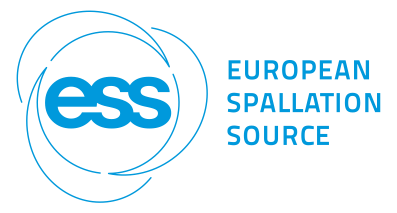Speaker
Ms
Vedrana Andersen Dahl
(Technical University of Denmark)
Description
Exact geometry is important for product development and quality control of Tetra Pak carton packages for liquid food products, leading to better performance and lower cost. For packages intended to be used with the drinking straw, the membrane covering the pre-punched straw hole has to hold the liquid content inside the package, while still allowing for an easy opening. Furthermore, wider straw allows for the better flow of the liquid product, but it requires a larger and a more resilient membrane. Product development aims at meeting those opposing objectives, as well as increasing converting production speed and package filling machine speed. Gaining knowledge on the geometry of the straw opening is valuable, since accurate geometry can be used directly as an input to the virtual simulation models for product development.
To investigate the possibility of the automated method for extracting the accurate geometry of the straw hole and the membrane, an experiment was conducted at DTU Imaging Industry Portal. The straw hole of Tetra Pak packages is covered by the laminated membrane consisting of an aluminium foil sandwiched between the thin layers of polymer material. The layer of aluminium is 6 μm thick. A sample containing the straw hole and the membrane was scanned at DTU Imaging Industry Portal using a micro CT scanner, with the resulting voxel size of 1.9 μm. Fig. 1 shows a part of the reconstructed volumetric data. The aluminium foil is visible as a bright horizontal line, and small part of the carton is visible on far right.
It is easy to detect the aluminium foil in the obtained volumetric data using simple segmentation techniques, as its voxel intensities are much brighter than the surrounding matter. For example, thresholding for the aluminium results with the binary response in Fig. 2. On the other side, detecting the layers of polymer is challenging, at its intensities resemble those of the surrounding air. Estimating polymer intensity distribution from the intensity histogram, and calculating the probability of the voxel belonging to this distribution results with the probabilistic polymer response in Fig. 3. Incorporating edge detection does not fully alleviate the problem, due to the edge-like noise in the background.
To extract the accurate geometry of the membrane, including the polymer layers, we applied a layered net surface approach by Li et al., which incorporates geometric information into the detection model. The geometric information is based on our knowledge of the sample: aluminium and polymer may be modelled as terrain-like, smooth, layered and non-intersecting surfaces. Those geometric constraints significantly reduce the number of acceptable surface detection outcomes. From all the remaining outcomes, we use a graph-cut based search to find the surfaces with optimal response throughout the whole volume. As an initial goal, we set up a model for three surfaces: a surface defining the aluminium foil, a surface defining the upper edge of the upper polymer layer, and a surface defining the lower edge of the lower polymer layer. We used a brightness response when detecting the aluminium layer, and polymer-to-air transition response when detecting two edge layers. See Fig. 4 for results visualized on one slice, and Fig. 5. for visualization of detected surfaces.
The resulting framework demonstrates the feasibility of the automated approach, allowing for the accurate detection of the layered materials comprising the straw hole membrane. To be even more valuable, the method should be coupled with the assessment of the quality of the fit. This is because the geometric constraints will always be met regardless of the data (e.g. the surfaces will be found even when the membrane is punctured).
![Tetra Pak data][1]
![Aluminium response][2]
![Polymer response][3]
![Surface detection response][4]
![Detected surfaces][5]
[1]: http://people.compute.dtu.dk/vand/TetraPak/Fig1_T_slice.png
[2]: http://people.compute.dtu.dk/vand/TetraPak/Fig2_T_alu_th.png
[3]: http://people.compute.dtu.dk/vand/TetraPak/Fig3_T_plast_F2.png
[4]: http://people.compute.dtu.dk/vand/TetraPak/Fig4_T_s0s1s2x1.png
[5]: http://people.compute.dtu.dk/vand/TetraPak/Fig5_T_film_S.png
References:
Li, Kang, et al. "Optimal surface segmentation in volumetric images-a graph-theoretic approach." Pattern Analysis and Machine Intelligence, IEEE Transactions on 28.1 (2006): 119-134.
| Topic Area / Session | New X-ray Imaging Modalities for High Quality and Safe Food |
|---|
Author
Ms
Vedrana Andersen Dahl
(Technical University of Denmark)
Co-authors
Ms
Camilla Himmelstrup Trinderup
(Technical University of Denmark)
Mr
Carsten Gundlach
(Technical University of Denmark)
Ms
Christel Andersson
(Tetra Pak Packaging Solutions AB)
